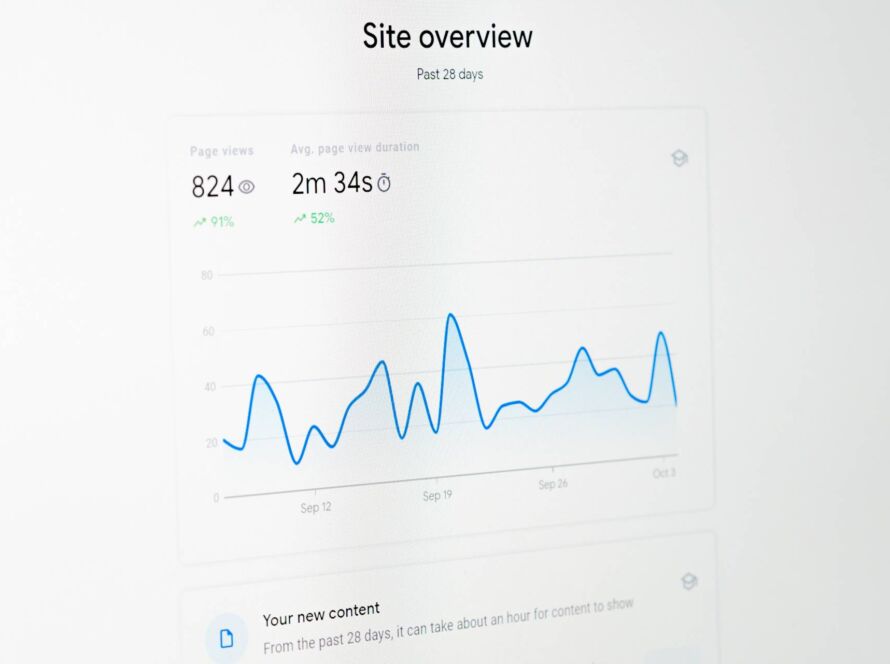When I launched ContentMender earlier this year, I simply wanted to provide a solution to a nagging problem I’ve witnessed over the years across various digital marketing agencies — the separation between content marketing and SEO.
Some internal divisions within companies treat these two divisions like the proverbial separation of church and state. Many SEO departments don’t even use their content team to create title tags and meta descriptions – clearly a huge mistake.
These types of agencies spend months performing an audit, resolving technical issues, and conducting keyword research before considering a content-marketing strategy — never mind actually creating one.
During those months that keyword research could have helped produce some serious content that would help benefit all SEO efforts. And, as important, provide that agency’s client with immediate satisfaction (tangible product) and additional chances for conversion.
A powerful content marketing campaign runs best alongside the outset of an SEO campaign, and brings immediate energy to all inbound marketing as the SEO updates are completed, and those updates are propagating on search engines. When SEO campaigns and content marketing are combined, and both optimized, online greatness is achieved; the SEO provides the means of discovery, and content marketing the means for conversion.
As the tactics of the SEO campaign are implemented, the content marketing campaign can start delivering immediate conversions and show a digital marketing agency’s progress. Each piece of content can be used for the overall digital marketing solution, including material for social outreach, and as resources for influencers/bloggers within the client’s niche to garner some linkbacks.
With that said, it’s time to restructure thinking and begin an immediate systematic approach to content marketing during the outset of an SEO campaign. An optimal strategy only works when a system of tactics are in play across both SEO and content marketing.
This is SEO-driven content marketing, and here’s the system behind the content marketing strategy that’s needed at the outset of any digital marketing campaign. The best part? When thinking of content marketing as a reciprocal system, it can be part of your long-term campaign success when the rough and tough SEO tasks — technical matters, site architecture, etc. — are over.
The following system works regardless if you’re fulfilling content needs on the homepage, a main category page, or a blog post. But this piece is focused on the blog part of the content mix, an area where many businesses need serious help.
Keywords: Your Efforts Equate to Zilch Without Them
Every SEO-driven content marketing strategy begins with intense keyword research. If site architecture is the foundation of your website, and content makes up the various structures, keywords are the nails, glue and mortar that keeps it all together.
Thousands of articles exist with regard to keyword research, so we’ll keep this to a more refined strategy to add to basic SEO keyword research.
First, shift from SEO mind to ROI mind. To begin a strong blog-based content marketing campaign, start the thinking based on ROI – what products/services bring your client the most money? What are the 80/20 products that simply sell with the least amount of effort?
Remember, most business owners can care less about the jargon of your digital marketing strategy, but when you mention you want to optimize online results to raise the bottom line, the response will be positive, and they’ll never stop talking. Listen and learn.
Create a list of the main keywords from the businesses’ largest ROI terms, and start the keyword research process using various tools; ContentMender relies on SEMrush, Google Adwords and Google search results for research.
With a long-term strategy in mind, you’ll want to segment lists of multiple broad and long-tail target keywords that you can build upon over time. Each of these terms should be backed up with related keywords – or Latent Semantic Indexing keywords as known in the industry (just never use those terms before a client!).
During this research, these related keywords will continually spark endless topics for blogs, so always be proactive and start a seperate tab or sheet for future blog ideas. The more focused, the least amount of search volume – which is good for the mix when your client’s website starts ranking for the initial target set of keywords.
Let’s say you’re a business selling Ducati motorcycle accessories, and have various top-navigation category pages for each model, like “Panigale Parts,” “Multistrada Parts,” and “Monster Parts.”
Say the “Monster” category was the client’s top ROI product. Initial focus should go here. You research, and find “Ducati Monster Parts” is the highest in volume at 320 searches per month, but “Ducati Monster Parts Catalog” is more refined at 90, and “ducati monster spare parts” further refined at 50.
Now you easily got a few target longer-tail keywords to create blog titles, and, of course, you must find some related terms to show relevance among your content. Google these terms, and check the Google suggestions at the bottom of the page. Here’s some easy-to-use related keywords.
Also, pay attention to the websites ranking at the top. In regards to keyword research, this is also the only time you should spy on the competition. Reverse engineer those urls by finding the keywords those pages are ranking for; SEMrush and SpyFu are two of our favorite spy tools.
Remember, only spy on the competition for keywords – not content. Once you start obsessing over the competition’s actual content, you’ll sound like them. This does nothing for an original voice, which your client needs to stand out. Speaking of voice, make sure it’s the same across your entire website. You can tell companies that have different writers writing different pages; for the content-marketing client, an inconsistent voice on an agency’s website relates to a lack of focus quality.
Also, check the trends. Two our favorite tools are Buzzsomo and Google Trends. What’s trending at the moment is huge for viral posts, though again, like spying on the competition, we try not to actually get deep into reading because you’ll fall into the trap of sounding the same as everyone else. Not a win for a client.
Brainstorm Mix: Viral Loop and Page-Keyword Support
Once keywords are established, the fun part begins — creating content. The ideal SEO-driven Content Marketing system focuses on two types of blogs: ones that provide keyword support for the main navigation pages (i.e. Ducati Monster Parts), and ones that with viral merit.
Try a 50/50 blend of this type of blog content for however your engagement says; if you’re creating 10 blogs per month (ContentMender suggests 6 at bare minimum), 5 go toward “keyword support” posts to target the typically never-ending long-term keywords (internally linking to the main navigational page), and 5 towards the “viral merit” for serious traction that leads to brand building and linkbacks.
Back to our motorcycle example. To help support the hypothetical main “Ducati Monster Parts” page, you’ll create “keyword support” articles around longer-tail keywords like “ducati monster 696 parts” or “ducati monster performance parts.” In regard the former, these blogs can provide technical aspects of the Ducati Monster 696, including an overview of the motorcycle, sales numbers, etc. These “keyword support” blogs are built to educate and influence.
Each of these blogs would be piggybacked with ones to embrace “viral merit,” such as “Peregrine Falcon Vs. Ducati Monster: Who Wins?” This type of post sparks interest, naturally attracting shares. Many would be surprised that a Peregrine Falcon can reach 200 mph while at dive. Get wild, have fun and above all be original.
Remember, also, to create all content in a unified voice. Work closely with marketing and sales, along with c-level execs, if possible, to build and strengthen the voice, especially in the beginning of an engagement. Keep this voice consistent across not only the client’s website, but also social or any third-party guest blogs you may ghostwrite on behalf of the client.
Infographics Please!
The system now turns to anything that can enhance the post, including photos and videos, which clients typically supply, and the big one to help the viral posts — infographics. According to Hubspot, infographics are liked and shared 3x more than any other content on social media. Use them as much as possible, especially in the viral posts, and make sure they are well branded. Infographics also are the perfect tool to recycle older content. Just like you did with your keyword prioritization based on ROI, take the 80/20 position here, find your client’s top-performing posts, and create infographics.
Also, if your client has video or a budget to create video, utilize it. If the client doesn’t have time or budget to create anything worthy, there are services that can easily turn web page content into video, which clients can upload to their YouTube channel or whatever service used, and create some cross traffic between the video channel and the website.
Never Post Without CTAs
Don’t forget them, whether its a banner running inline with the text of a blog, an clickable image that takes visitors to a contact page, or a simple call out in the text itself. CTAs should satisfy five actions: buy, try, call, email or follow. Don’t upload a piece of content without them. This can make or break the system, so keep this in mind always.
Engage, Engage, Engage
Save some time for outreach to bloggers within your client’s industry. Finding the correct influencers/publications to approach is extremely simple by Googling the keywords and searching Google News, or spying on competitors to see who links back to them. And don’t be afraid to go for the big publications.
This is typical outreach for link building, but make it a part of your SEO-driven content marketing system. The relationships built with bloggers/influencers/publications will not only benefit your clients for future outreach as your building out their inbound marketing, but also your agency as it can lead to relationships that can benefit other clients.
Also, if your client doesn’t have a social team, recommend post content, especially for Facebook and Twitter. And don’t forget to supply proper hashtags.
Oh Yeah…Word Count Talk
Finally, embed word count talk into your system. “How many words?” is a question you may often hear, and there are many varying opinions. Regardless, this is something that is hugely missed across hundreds of industries – especially on home pages and e-commerce pages with hundreds of product listings.
The reason for more written content is simple – more keyword opportunities. And the more related relevant keywords you have on a page, the more search engines like Google see you as an authoritative and trustworthy source. Of course we’re not talking about just keyword stuffing a page with unreadable content.
For blogs, most across the industry agree with a 500-word minimum, but reports from Searchmetrics of the top-ranked websites show that the longer the better; ContentMender’s minimum for blog posts is 800 words, but recommends 1200-2500 words for serious traction.
While we’re on the subject, seoforgrowth.com, the homebase for the must-read “SEO Growth” by John Jantsch and Phil Singleton, say the homepage should have 200-300 words; inner pages 500 words or more; and blog posts 1000-2500 words.
Concluding Thoughts
SEO-driven content marketing begins with this simple, yet effective, systematic approach that can be replicated over and over across each of your clients; it’s a scalable solution for content marketing across any industry, and when done correctly, can create lifelong clients.
With this systematic approach, you are building your client’s brand, and helping build a reputation for them all while continually building the ultimate solution for more conversions – content. The more the better. And the SEO benefits are clear; when engaging content is socially shared and picked up for reference by other publications, it naturally leads to stronger SEO through social signals and the beloved backlink.






